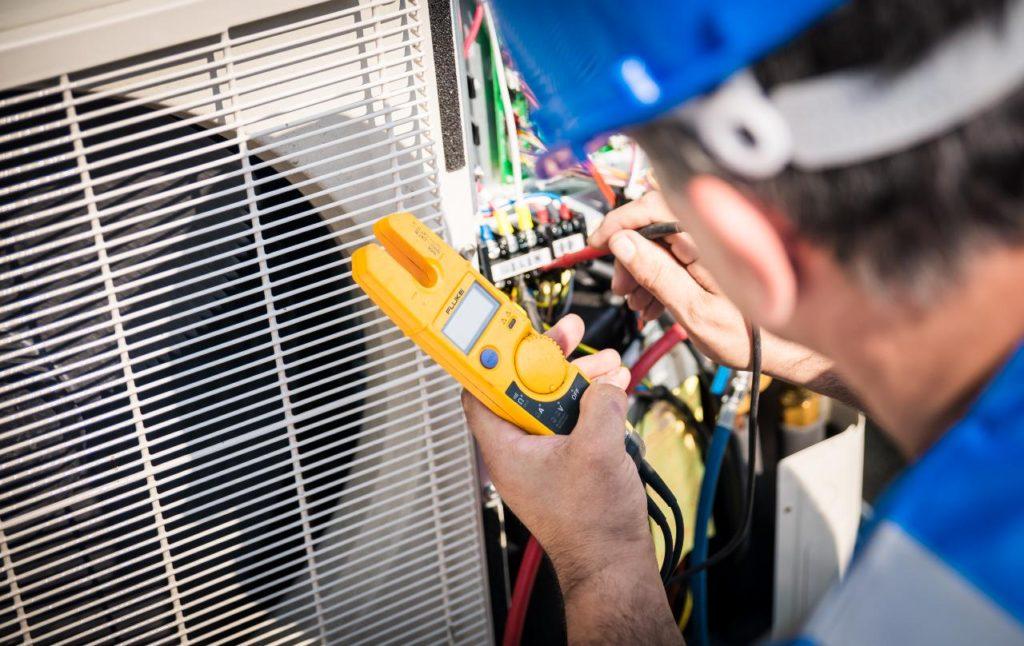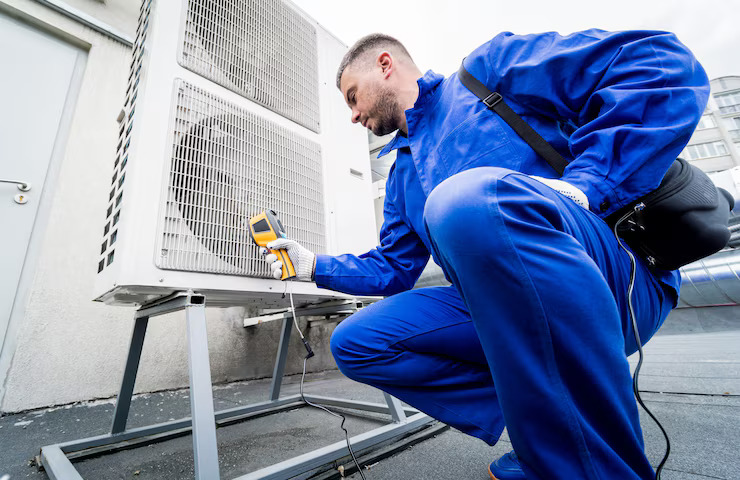TM44:
An air‑conditioning TM44 inspection—mandated under UK regulations to assess the energy efficiency of larger air‑conditioning systems—typically takes anywhere from 1 to 4 hours on site, depending on the complexity and size of the installation. In addition, there’s administrative work both before and after the visit (reviewing system documentation, compiling the report, and making recommendations), which can add another 1–2 hours of professional time. In total, clients should expect around 2–6 hours of an inspector’s time per system inspected.
Legal Requirements and Frequencies
Under the Energy Performance of Buildings Regulations, any fixed air‑conditioning system with a total rated output of more than 12 kW requires a TM44 inspection in Manchester. Systems between 12 kW and 250 kW need inspection every five years; those above 250 kW must be checked every three years. Failure to comply can lead to fines up to £300 per unit, capped at £5,000 per assessment.
Pre-Inspection Preparation TM44 Manchester
Before the on-site visit, the inspector usually requests system documentation: installation schematics, previous maintenance records, and performance logs. Gathering these in advance can save 30–60 minutes on site by allowing the assessor to focus immediately on the physical inspection rather than reviewing paperwork. Ensure system schematics are up‑to‑date and that key performance data (flow rates, refrigerant pressures, energy consumption) are readily available.
Factors Affecting Inspection Duration
System Size and Complexity:
Small split-type systems may take only 1–1.5 hours, whereas large VRF (Variable Refrigerant Flow) or multi-split installations spread across several floors can take 3–4 hours.
Accessibility:
Difficulty‑accessing plant rooms or ceiling‑void evaporators can add time.
- Documentation Quality: Incomplete or outdated records slow the process.
- On-site Testing: Where performance testing (flow, temperature differentials, pressure readings) is included, this can add 30–60 minutes.
Typical On-Site Process
Opening Brief (5–10 minutes):
The inspector meets the site contact and confirms the scope.
Visual Inspection (20–40 minutes):
Checking components (compressors, fans, coils, condensers), controls, and insulation.
System Check (15–30 minutes):
Verifying that controls, timers, and thermostats operate correctly.
Data Capture (10–20 minutes):
Photographing key elements and noting readings.
The total time on‑site typically ranges from 1 to 4 hours; most mid-range commercial systems average around 2–3 hours.
Off-Site Work and Reporting
- Reviewing on-site measurements against manufacturer specifications.
- Assessing system controls and operational practices.
- Writing energy-saving recommendations (e.g., optimizing controls, installing variable speed drives, upgrading insulation).
Report preparation generally takes 1–2 hours, depending on the level of detail and number of systems inspected.
Deliverables and Timing
Clients usually receive the completed TM44 report within 5–10 working days of the inspection. Some consulting firms offer “fast-track” delivery for an additional fee, turning around reports in 1–2 working days.

Common Recommendations and Follow‑Up
Typical recommendations include:
Control Upgrades:
Installing programmable thermostats or building management system integration.
Maintenance Improvements:
Regular coil cleaning and filter replacement schedules.
Component Replacements:
Retrofitting variable speed drives or high‑efficiency compressors.
Non-Compliance Impacts
Failure to carry out a TM44 inspection on time can lead to:
Fines:
Up to £300 per unit, capped at £5,000 per assessment.
Insurance Issues:
Some insurers may void coverage for uninspected or poorly maintained systems.
Higher Energy Costs:
Undetected inefficiencies can inflate energy bills by up to 20 %.
Tips to Streamline the Process
Centralised Documentation:
Keep all manuals and logs in a shared digital folder.
Site Walk‑Through:
Pre-inspection, familiarise the inspector with restricted areas to avoid delays.
Bundled Inspections:
If multiple systems exist, schedule them on the same day to save travel time.
Qualified Contact:
Have a facilities manager or engineer available during the inspection to answer technical questions immediately.
Choosing the Right Inspector
Ensure your assessor is accredited under a UKAS-recognized scheme and has experience with your specific system type (e.g., VRF, chiller-based, rooftop units). Accredited inspectors typically complete inspections more efficiently, reducing on-site time and report turnaround.
Balancing Cost and Time
While a faster inspection may seem attractive, rushing can miss hidden inefficiencies. Conversely, overly prolonged inspections can incur higher fees. Aim for a balance: clarify expected duration and fee structure upfront, perhaps splitting fixed‑fee proposals by system size or type.
Final Thoughts:
A TM44 Inspection Watford is a key step in maintaining compliant, efficient air‑conditioning operations. By understanding the factors that affect duration—system complexity, documentation readiness, and testing scope—clients can better plan inspections, minimise disruption, and ensure timely delivery of actionable energy-saving recommendations. Regular TM44 inspections not only keep you within the law but can also identify opportunities to reduce energy bills and carbon emissions over the long term.
